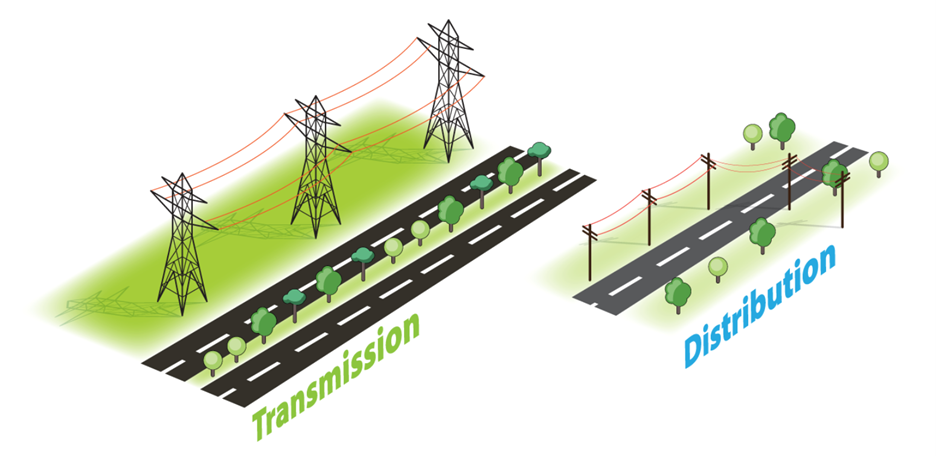
Focused Policy Key to Reliable Electricity Sector Transition: Part 1
Natural gas provides critical reliability services and will likely play a role throughout the energy transition. Bringing on the clean, flexible, and dispatchable assets that can replace it requires focused and coordinated policy.
This is part one of a two-part blog series. To continue to part two, please visit this page.
Natural gas provides critical reliability services today and will likely play a role throughout the energy transition. Even if gas generation output declines over time, it is critical to ensure that the natural gas system is capable of supporting the electric system throughout the energy transition. Transitioning away from natural gas and bringing on the kinds of clean, flexible, and dispatchable assets that can replace it requires focused and coordinated policy.
Understanding the Grid
The big transmission lines you see when you’re driving along the highway are an important component of the electrical grid. Known as the bulk electric system, these are high-voltage lines used to transmit electricity over large distances. These lines are different than the lower-voltage lines operated by your utility to distribute electricity.

Source: PJM Learning Center.
What Makes the Grid Reliable?
On the bulk electricity system, supply (generation) and demand (load) must be balanced at all times. Any imbalance can impact grid frequency, change how power flows across transmission lines, and, if not managed properly, could lead to a cascading blackout.
In real-time system operations, mandatory and enforceable reliability standards ensure that the bulk electric system can withstand sudden disturbances, or maintain operating reliability. Operating to these standards safeguards the grid’s reliablity even if the loss of a generation resource, or the loss of a transmission line, changes power flows in real-time system operations.
An important part of managing the physics of power flows, meeting reliability standards, and maintaining reliable grid operations is having generation resources that provide what are called essential reliability services. System operators also call these essential reliability services grid attributes and ancillary services.
These attributes are provided by generation resources and ensure that system operators can respond to changes in grid frequency or voltage stability while keeping supply and demand in balance and transmission lines within their rated limits.
In other words, without generation resources that provide specific grid attributes, system operators would not be able to maintain operating reliability.
What Types of Generation Resources are Needed?
Various kinds of ancillary services are needed, but in grids made up of mostly renewables, flexible, quick-start, and fast-ramping resources are needed to ensure that system operators have sufficient balancing energy and operating reserves.
Generation resources that provide balancing energy are already online producing energy and can quickly change their output (i.e. ramp up or down) in response to dispatch signals, or are generators not producing energy that can quickly ramp up and produce at full output. Generation resources that provide operating reserves are similar, but must be capable of producing energy within 10-30 minutes, and, in some regions, sustaining their output for one hour.
Today, natural gas-fired generators and, increasingly, battery storage provide balancing energy and operating reserves, but both are limited.
Energy storage resources are limited by the total amount of energy that can be discharged when the asset is fully charged. Natural gas generators have limited output when there is
insufficient gas production during extreme cold weather, or because mechanisms to schedule gas flow on the gas pipeline system, or procure gas in secondary markets, make it difficult to respond to rapidly changing electric system conditions.
Growing Sources of Uncertainty
A key challenge in systems made up of mostly renewable resources is knowing how many of these quick-start, fast-ramping resources will be needed, when, and for how long.
This uncertainty and the need for dispatchable, quick-start, and fast-ramping capability are increased by the electrification of transportation and heating, changing and extreme weather patterns, and increasing amounts of customer-sited or distributed energy resources (DERs). DERs are rooftop solar, community solar, and customer-sited batteries, for example, which are not visible to bulk system operators and today appear only as load shifts, not load reductions. (See relevant ISO and RTO reports to FERC discussing growing sources of operational uncertainty here).
As a result, maintaining operating reliability in real-time power system operations is becoming more complicated.
Kelli Joseph
Senior Fellow, Kleinman CenterKelli Joseph is a Kleinman Center Senior Fellow. She works at the intersection of policy and markets, with a focus on transitioning the electricity sector to support a decarbonized, climate resilient economy.

